
1123MHS | 07/2021 | PAGE 1 OF 6
Pergo DuraCraft + WetProtect Locking Luxury Vinyl Tile - Floor Installation Instructions
Tools Required for Installation
Common Tools
Carbide
40T Blade
Job Site Site Requirements
Locking luxury vinyl tile is a durable floor covering, not
intended as structural material. Locking luxury vinyl tile
requires a clean, dry, secure subfloor that meets building
codes. It can be installed above, on or below grade.
The following requirements are not intended to supersede
federal, state or local building codes, but as with many other
interior finish products, may require modifying existing
structural components for successful installation. Owner
assumes responsibility for compliance with all building codes.
All work involving water or moisture (plumbing, masonry,
painting, plastering) must be completed prior to flooring
installation. Building envelope must be complete and exterior
doors and windows installed. Exterior grading and gutter
downspouts should be completed and permanent HVAC
systems in operation.
Precautions should be taken to protect floors from other
trade work. Do not cover floors with plastic, red rosin, felt
or wax paper or previously used cardboard. Instead, use
a breathable material such as clean, dry, plain uncoated
cardboard or craft paper; inks from printed cardboard could
damage the floor. The floor should be thoroughly cleaned
before covering to remove grit and debris that would damage
the finish.
Locking luxury vinyl tile flooring is suitable for use in climate-
controlled indoor installations only and should not be
installed in rooms with floor drains or sump pumps.
Room temperature should be 45-115°F. These environmental
conditions are specified as pre-installation requirements and
must be maintained for the life of the product.
10' (3 m)
> 5" (130 mm)
6 mil (0.15 mm) virgin
polyethelene vapor barrier
Ground
> 8" (200 mm)
100% Silicone
Sealant
Felt Furniture
Pads
PE Foam
Backer Rod
Other Tools and Supplies
SILICONE
CAULK
SILICONE
CAULK
SILICONE
CAULK
Tapping block
and 5mm (⅜”) spacers
Moisture
Meter
S
p
a
c
e
r
s
5
m
m
S
p
a
c
e
r
s
5
m
m
ON
Non Destructive Moisture
dlfwej dtra
djflsv
dlfwe vtra
alskdjf
vmwjc
Concrete
Encounter
Plus
0
1
2
3
4
5
6
0
50
100
150
200
250
Moisture
Meter

1123MHS | 07/2021 | PAGE 2 OF 6
Pergo DuraCraft + WetProtect Locking Luxury Vinyl Tile - Floor Installation Instructions
If the flooring temperature is 45-115°F, no acclimation is required prior to installation.
RADIANT FLOOR HEATING – This product can be used in combination with many types of in-floor heating. The heating system
can be cast in a concrete floor or in a thin layer of filler on the surface of a concrete subfloor. It can also be installed under a wood
subfloor or installed on the surface of the subfloor as an electrical matting if it meets the floor flatness requirements.
a. Follow the instructions from the supplier of the floor heating system.
b. Concrete subfloors must be installed and cured with no heat transfer for a minimum of 60 days.
c. The heating system must be in operation for at least two weeks before installation. The system may be turned o or set to a suitable
installation temperature (65 to 72°F).
d. The flooring surface temperature, which is the surface of the subfloor or the heat radiating from electric heating mats, should be
designed specifically for resilient flooring and should not exceed 85°F (29°C).
CAUTION – Excessive floor heating will damage flooring planks.
A moisture test is strongly recommended to determine if high moisture exists in the subfloor. When using a calcium chloride
moisture test for concrete subfloors (ASTM F1869), values must be ≤ 8 lbs/1000ft2/24-hr or < 90% RH with an in-situ probe (ASTM
F2170). Moisture readings of wood subfloors must be ≤ 14%. Acceptable job site conditions, including subfloor moisture conditions,
must be maintained throughout the lifetime of the flooring.
This product is installed as a floating floor only and requires the use of T-moldings in doorways 4 ft (1.22 m) or less and in rooms
40 ft (12.2 m) or larger in length or width. Floor movement must not be constrained by glue, nails, screws, hardware or other fixed
obstructions.
This product must be installed in accordance with these installation instructions.
Site and Material Preparation
A B
Door
Frame
Cutting
Line
Casing
Wallbase

1123MHS | 07/2021 | PAGE 3 OF 6
Pergo DuraCraft + WetProtect Locking Luxury Vinyl Tile - Floor Installation Instructions
A) Remove carpet and padding. Also remove any wood flooring installed on concrete. Do not remove products unless they are
asbestos-free.
B) Undercut door casing. Slide the flooring at least 3/8” underneath the door casing. Also leave a concealed 3/8” minimum expansion
space around entire room.
C) Remove bumps or peaks in subfloor and fill depressions with floor leveling compound to ensure no more than 3/16” unevenness
per 10 ft span.
D) If the product is between 45-115°F, no acclimation is required before installation.
E) Clean debris from subfloor before installation.
%
E GF
C D
6 mil (0.15 mm) virgin
polyethelene vapor barrier
> 8” (200 mm)
45° – 115° F
15° – 29° C
Subfloor
ON
Non Destructive Moisture
dlfwej dtra
djflsv
dlfwe vtra
alskdjf
vmwjc
Concrete
Encounter
Plus
0
1
2
3
4
5
6
0
50
100
150
200
250
Moisture
Meter
1 2 3

1123MHS | 07/2021 | PAGE 4 OF 6
Pergo DuraCraft + WetProtect Locking Luxury Vinyl Tile - Floor Installation Instructions
1 3 5 5
2 4 6
5
6
6
4
7
10
14 15 16 17
11 12 13
8 9
5 6
> 12 in
> 30 cm
Right
Left
PE foam backer rod
Molding
Silicone sealant
Silicone sealant
PE foam backer rod
Molding
Silicone sealant
18 19 20

1123MHS | 07/2021 | PAGE 5 OF 6
Pergo DuraCraft + WetProtect Locking Luxury Vinyl Tile - Floor Installation Instructions
Flooring Installation
1. Inspect each plank. Floor should be installed by blending planks from several cartons at the same time to ensure good color and shade
mixture throughout the installation.
2. For the first row along straight walls, remove the tongue on all long side joints and on the short side of the 1st plank only.
3. For uneven walls, trace contour on the tongue-side of plank and cut.
4. Assemble the first row, tongue-side toward wall. Insert the end tongue into the end groove and rotate downward to assemble. Keep the
planks aligned and the joints closed.
5. Two spacers thick side to thick side = 3/8”.
6. Start the second row of flooring by using the trimmed planks from the previous row. Provide a 3/8” space for expansion on all sides. First
piece must be at least 8” long. Start new rows with pieces trimmed from previous row. Ensure at least a 12” end joint oset.
7. At a slight angle, insert the tongue of plank 2 into the groove of plank 1 until the plank edges meet, and then rotate down until the
joints lock.
8. When joining the next plank in the second row, join the short end of the plank first. There will be a gap on the long side joints when the
plank is rotated down.
9. Raise the outside edge of the plank, as well as the first plank in row two upward approximately 1”. Maintain this angle as you push the
plank in until the plank edges meet. Rotate the plank downward until the joint locks. Repeat these steps to complete the installation.
Installation Tip: Place a carton of planks across the end of the row being installed to keep installed planks in place during installation.
10. After tapping the long side joint closed, close the short side edge joint using a tapping block or pull bar. Note: Uneven tapping or use of
excessive force may damage the joint.
11. Ensure there will be a 3/8” gap (after the joint is closed) to the wall for expansion.
12. For the last row, align the plank to be used on top of the 2nd to last row. Using a full-width plank as a spacer, trace wall contour and
cut plank.
13. For the last row, install the long side tongue into the groove with the end joint aligned. Using a pull bar and hammer, work evenly along
the length of the plank and lightly tap the joint closed.
14. After tapping the long side joint closed, tap the short side closed, using a tapping block or a pull bar.
Installation Under Doorway Casing
15. Slide plank under pre-cut door casing.
16. Tap the long side joint closed first. Then tap the end joint closed.
17. Allow 3/8” expansion space under the door casing trim.
Installation Around Fixed Objects (such as Pipes)
18. Allow 3/8” expansion space around pipes or other fixed objects.
Finishing the Installation
19. Remove all spacers.
20. The entire perimeter of the installation must be sealed with the WetProtect molding system or 100% silicone sealant in accordance with
the installation instructions. For sections where the WetProtect molding system cannot be used, seal the perimeter with 100% silicone
sealant, as follows. DO NOT use acrylic sealant.
• First, fill all expansion spaces with 3/8” compressible PE foam backer rod and cover with silicone sealant.
• Prior to installing the moldings, apply silicone sealant to the portion of the molding or transition that will contact directly with
flooring surface.
• Install moldings and immediately wipe away any excess silicone sealant.
• Apply silicone at connections to doorframes or any other fixed objects.
-
 1
1
-
 2
2
-
 3
3
-
 4
4
-
 5
5
Pergo LWP30-320 Installation guide
- Type
- Installation guide
Ask a question and I''ll find the answer in the document
Finding information in a document is now easier with AI
Related papers
-
Pergo LWP30-210 Installation guide
-
Pergo LWCPS185 Installation guide
-
Pergo LWCSS354 Installation guide
-
Pergo LWCSS385 Installation guide
-
Pergo LWCSS354 Installation guide
-
Pergo LWCSS376 Installation guide
-
Pergo TimberCraft User manual
-
Pergo LWCSS487 Installation guide
-
Pergo LF000878 Installation guide
-
Pergo LF000878 Installation guide
Other documents
-
 QuickStep QS907 Installation guide
QuickStep QS907 Installation guide
-
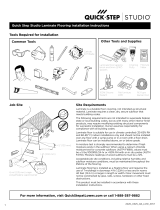 QuickStep QS902 Installation guide
QuickStep QS902 Installation guide
-
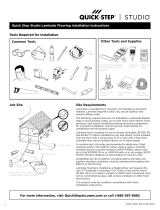 QuickStep LWCQS318 Installation guide
QuickStep LWCQS318 Installation guide
-
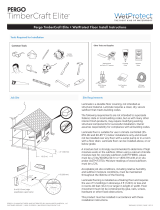 WetProtect PERGO Operating instructions
WetProtect PERGO Operating instructions
-
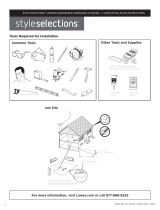 Style Selections LWCSS352 Installation guide
Style Selections LWCSS352 Installation guide
-
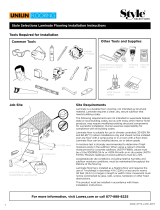 Style Selections LWCAR306 Installation guide
Style Selections LWCAR306 Installation guide
-
Home Decorators Collection 361241-2K383 Installation guide
-
Mohawk S935LW.343 Installation guide
-
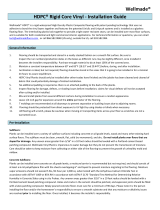 Islander 811029 Installation guide
Islander 811029 Installation guide
-
 Home Legend HL663 Installation guide
Home Legend HL663 Installation guide












